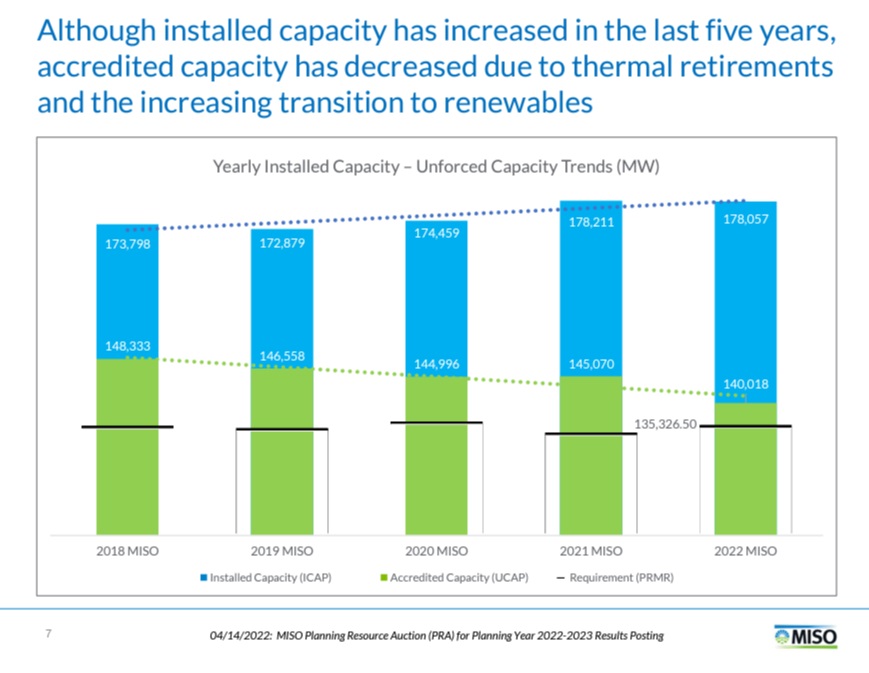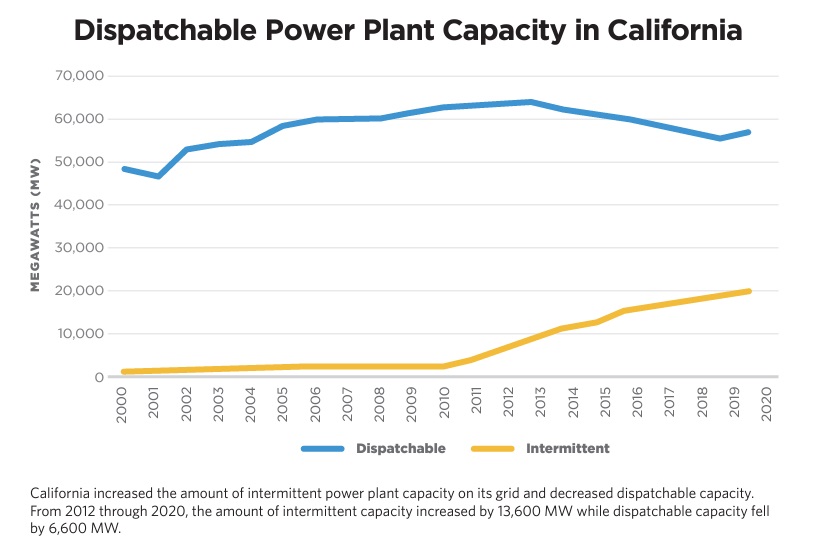Regional grid doesn’t have enough capacity to meet its reserve margin, increasing blackout risks
The regional electric grid, the Midcontinent Independent Systems Operator (MISO), recently announced that there is not enough reliable power plant capacity on its system to meet its anticipated peak demand plus a margin of safety, increasing the risk of blackouts.
MISO says there is a 1,230-megawatt (MW) shortfall in power plant capacity to meet its reserve margin, an amount larger than the Prairie Island nuclear plant (1,040 MW) or the Boswell coal plant (938 MW).

The capacity shortfall is the result of reliable power plants, mostly coal and nuclear power plants, retiring and being replaced by wind turbines and solar facilities that aren’t nearly as reliable.
The graph below from the slideshow released by MISO shows the installed capacity (ICAP) of power plants on the MISO system increasing, but accredited capacity (UCAP), or the amount that is considered reliable, falling every year. In layman’s terms, the amount of reliable power plant capacity on the grid is declining, even though we are building a lot more wind and solar.

We see this exact same trend in resource plans throughout the country. Electric companies continue to retire coal and nuclear plants prematurely and replace them with wind, solar, and sometimes natural gas. The graph below shows that California has seen its dispatchable capacity decline since 2013, as non-dispatchable wind and solar capacity grew.

One problem with the planning process is that MISO gives wind a capacity accreditation (UCAP) that is 15 percent of its installed capacity, and solar is currently receiving 50 percent. This means electric companies don’t have to build a 1:1 replacement of natural gas for each MW of nuclear or coal that shuts down.
In my opinion, this is a problem because wind and solar can deliver less than their UCAP. In the Upper Midwest, the wind is a net drain on the system at -22 F because the wind turbines are shut down at these temperatures and heating elements in the turbines consume electricity. As a result, the capacity shortfall may be understated due to phantom firm resources.
“Phantom Firm” refers to the amount of capacity MISO thinks renewables will provide when demand is highest. The problem with this situation is that wind and solar are non-dispatchable, so they may not be generating any power when needed. This means MISO is expecting about 6 GW from renewables in its ‘firm’ stack that may or may not be there.
MISO says the lack of reliable power plant capacity means the risk of rolling blackouts is higher than it has been historically.
The worst part about this entire situation is that this capacity shortfall was entirely foreseeable. Instead of shutting down our existing coal and nuclear plants, we should be seeking to utilize these resilient electricity suppliers until the end of their useful lives and replace them with new nuclear power plants in the future. This will optimize reliability, affordability, and environmental outcomes.